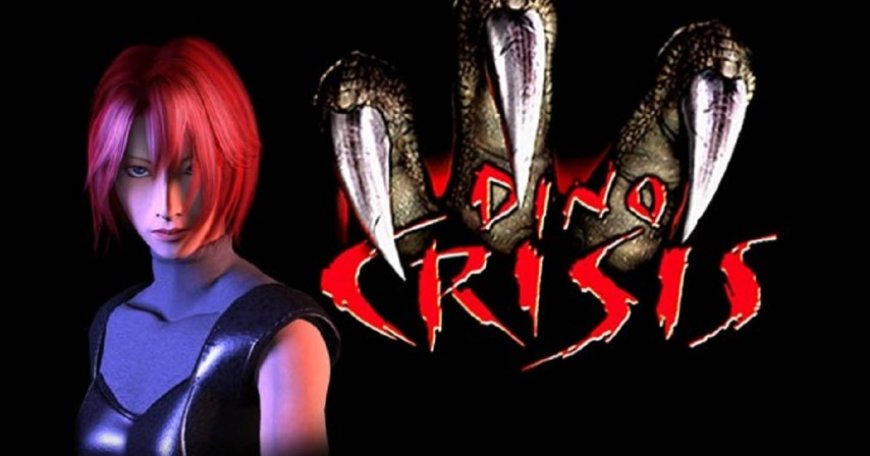NostalGame: Dino Crisis
Let's talk about another classic Capcom game, Dino Crisis.

We recently watched the reveal trailer for the Resident Evil 4 remake and were reminded of another classic Capcom game, Dino Crisis. Developed by one of the finest game directors, Shinji Mikami, who is also the director of the original Resident Evil titles, Dino Crisis was one of the latest games released for the PlayStation 1. As individuals who are still in love with PlayStation 1's polygon aesthetic visuals, we can clearly say that we love Dino Crisis more than we did Resident Evil back then.
Dino Crisis felt more cinematic than Resident Evil, and the controls were more responsive. The dinosaurs in the game were created with peak polygon technology, making them some of the best-looking reptiles in video games at the time. However, just because we did not feel the survival aspect of the game as kids does not mean that we deny those elements. Dino Crisis is an action puzzle and survival game, definitely not as hard as other Shinji Mikami's works.
In Dino Crisis, we play as a special agent named Regina, trying to infiltrate a science military facility on Ibis Island to find Dr. Kirk, who is notorious for his military science project. We find ourselves in the outskirts of the facility with squad leader Gail and our partner, Rick, who does nothing but play with computers all day. Similar to previous Resident Evil titles, Regina speaks, runs, and shoots, but she also decides who she listens to during the story progression. We face two choices, two different approach ideas from Gail and Rick, and until the late game, these choices do not affect the ending, but the story progression or the challenges that we would face.
Gail can be summarized as Hank from the Resident Evil series, with no time for anything else but the mission. His approach always brings action to the table. On the other hand, Rick, being calmer and with a "we need to get off this Jurassic Park" approach, presents more puzzle-solving resiliency like inventory and key item management and pathfinding kind of progression. The choices we make during the game affect the challenges we face, but ultimately, Gail's mission-oriented approach works for us.
Dino Crisis is essentially Resident Evil with dinosaurs. As we approach the facility, we do not know about the dinosaurs that appear within it, and of course, characters are shocked and panicked when they see these reptiles. The game itself is called Dino Crisis, so it's not a surprise. About ten minutes into the story, the dinosaurs begin to show themselves, starting to occupy designated rooms and corridors, trying to eat us alive.
Although there are tons of dinosaur species that lived, Dino Crisis presents maybe five or six of them, mainly raptor species that are very hungry. There are no herbivore dinosaurs to be seen around, only raptors that can fit into narrow and long corridors. Starting by infiltrating the camp, puzzle elements come into play, which we need to solve to progress the story. These puzzle elements require us to gather key items, mainly facility keys, key codes, and sometimes items to crack these puzzles to continue the story.
When exploring a room in a game, it is important to thoroughly read any documents that may be present. By taking notes on these documents, players can learn the locations of items or passwords necessary for completing puzzles and progressing through the game. Failure to carefully read these documents may lead to difficulties or getting stuck on specific puzzles or points of the story. In the case of Dino Crisis, the game's puzzle-solving and attempts to infiltrate a facility full of dinosaurs is reminiscent of Solid Snake's infiltration of Shadow Moses Island in the first Metal Gear Solid game.
The story and setting of Dino Crisis are enjoyable and have the potential to be developed further in a remake. When playing survival horror games like Silent Hill or Resident Evil, player tends to conserve ammunition and only use weapons when necessary or during boss fights. This same strategy is recommended for playing Dino Crisis, as ammunition is limited and the game can feel like a true survival experience if players choose to dodge and trap dinosaurs instead of engaging in combat.
Dino Crisis uses tank controls similar to Resident Evil, but the controls are responsive and never feel clunky. Regina, the game's protagonist, does not have access to bombs, traps, or a knife, but players can use their handgun, shotgun, or grenade launcher if they choose to engage in combat. However, the author recommends avoiding combat as much as possible and instead focusing on puzzle-solving and item mixing.
Item mixing in Dino Crisis is similar to herb mixing in Resident Evil, allowing players to create new, stronger items or to multiply items they already have. For example, medium healing kits can be mixed to create medium kit plus rich heals that also stop bleeding. Poisonous or sleeping darts can also be created to use against dinosaurs, but we personally prefers to avoid using these items.
You could completed Dino Crisis on normal difficulty in around five hours, but noted that the game lacked enemy variety and boss fights. Despite these flaws, Dino Crisis is a classic game that deserves a remake similar to the Resident Evil 2 remake or the Resident Evil Village approach with FPS playstyle. The game had a unique approach, allowing us to make choices that affect the story progression and the challenges we face. It was an action puzzle and survival game, and while not as hard as other Shinji Mikami's works, it still provided a challenge for players.







